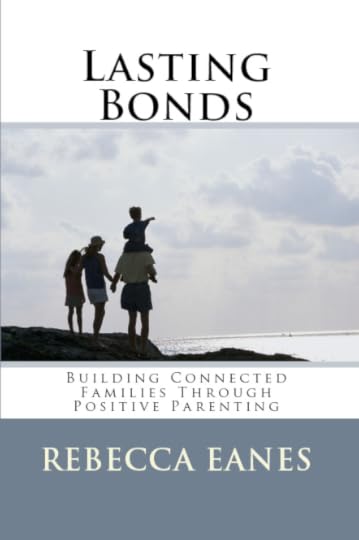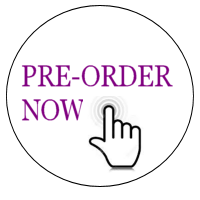Lasting Bonds Pre-Order and Sample Chapter

I am so excited to be able to offer my new book, Lasting Bonds: Building Connected Families Through Positive Parenting, to you for pre-order! Many of you have asked for this option, so click the button to pre-order now!

Today, I'm sharing with you the Table of Contents so that you can see the outline of the book, and I'm giving you a FREE chapter!
Table of ContentsIntroduction Part One: The PhilosophyWhy Positive Parenting?Supportive ResearchPart Two: Important Self Work3. Your Past, Present, and Future4. Rewrite Your Story5. Changing Your Thought Patterns6. Discipline Yourself First7. Identifying Triggers Part Three: United We Stand8. Identifying Differences9. The Connected Couple10. Effective Communication11. Your Family Blueprint
Part Four: Building the Foundation12. Fostering Trust and Connection13. Communicating with Children14. Routines15. Your Family Culture16. Sibling Bonds
Part Five: Redefining Discipline 17. Seeing Children in a New Way18. Builders of Self-Worth19. Trading Punishments for Solutions20. Solutions for Common Behavior Problems A Word of EncouragementReferences
*************** FREE CHAPTER ***************
Chapter 7Identifying Triggers
Somewhere along your journey, you've gotten armed with emotional triggers. It's okay; it happens to all of us. They are survival responses that got coded in your brain way back when. The important thing to remember is that triggers may explain your emotional outbursts, but they don't excuse them. It's time to take the responsibility for them now.
Maybe you don't yet know what your triggers are in regard to parenting. Maybe your child isn't even born yet. How lucky for that child that you are being equipped with this information now so that when an alarm does get tripped – and it will – you'll be ready. You've undoubtedly heard about how children can “push your buttons.” The thing is, they're your buttons – your responsibility.
Now, let's identify your triggers. Think back to a time when you felt a strong negative emotion toward your child. Once you recall this particular moment, notice when your mood shifted. Triggers are something very specific, so it may take some time to tease out. When my children fight, for example, isn't a trigger. That's a circumstance. The key is what happens inside your mind and body when your children fight and why. Digging deeper looks something like this:
When my children fight, I hear disrespect. Disrespect makes me feel uncomfortable. I get this nervous feeling in the pit of my stomach and I begin to feel agitated. Why does disrespect cause me to have these feelings? What was I taught about disrespect as a child? What happened to me when my parent perceived I was being disrespectful? So, I perceive that my children are disrespectful when they fight, and disrespect is something that must be squashed. Now, I see why my alarm is getting tripped. My brain is signaling that I must take action now to make it stop. Once my alarm is tripped, I'm being flooded with hormones that increase my agitation and make me feel strong and aggressive and I feel the need to release this horrible tension in my body, so I yell.
Notice that the children fighting actually had little to do with your reaction. That circumstance merely set off a chain reaction. The fuse was lit. What you have to learn is how to put out the fuse before it goes boom.
There is a space between every action and reaction. When you harness that space, take that split second and consciously expand it, you can use that space to put out the fuse. There are a lot of techniques and methods you can use to calm yourself down, but until you master that space, you won't have time to apply your techniques.
Awareness harnesses the space, and compassion puts out the fuse. Be aware of what is going on in your body and mind when the negative feelings first begin to surface. Take a deep breath, place your hand on your forehead or over your heart, and repeat to yourself “I have a choice in this space.” Now you are aware of your choice to let the fuse burn or to extinguish it.
Enter compassion. “May I be filled with confidence.” “We are okay; this is not an emergency.” “I am calm and capable of handling this.” This may sound like a very simple step, but it is very effective if you do it repeatedly, every single time you are triggered. These compassionate thoughts will signal your brain to calm down, and then you can use any of the following techniques to further soothe yourself so that you can respond to your child in a thoughtful and constructive way.
Calm Down Techniques
1. Deep breaths in for the count of 4, hold for a count of 7, release for a count of 8. Repeat 4 times.2. Be active. Do jumping jacks, push ups, or a jog around your living room. 3. Repeat an affirmation such as “I am a peaceful person.”4. Jot down something you're grateful for.5. Use EFT (emotional freedom techniques), which is an emotional or psychological acupressure technique. You can find many how-to videos online.6. Look at a baby picture of your child.7. Call your partner or a friend whom you've enlisted accountability from.8. Get some fresh air. Step outside. Go for a walk.9. Close your eyes and imagine you are in peaceful surroundings or one of your favorite places.10. Pick up this book and read a few paragraphs.You may be thinking, how am I supposed to do all of that when my kid is having a tantrum or we need to leave and she won't get her shoes on again?! This entire process can take under 2 minutes, and believe me, it's so much better than 2 minutes spent yelling and making things worse. Plus, you're modeling for your child an important skill – self-regulation.
This is a huge milestone and an important key to positive parenting. It can be tempting to skip this step and leap ahead to the discipline chapter, but I'm being completely up front with you when I say it won't do you any good to know how to positively discipline your child unless you can effectively and positively discipline yourself because your child will not take advice from someone who doesn't practice what he or she preaches. Put the work in now and you will not only be stellar examples for your children, but this skill will prove useful in all relationships throughout your lives.
Discussion Questions:
1. What are my biggest triggers?
2. Where did these triggers come from? Look beyond the surface and go deep with this question.
3. What is it worth to my family for me to take this chapter seriously and do the work?
4. How will I harness that space between action and reaction? List at least 2 steps you will take.
5. Which technique will I use to calm myself down before I respond to my child?
Have a plan. Work the plan. Once you've answered these questions, talk over your answers with each other. All of this communication is bringing you closer together, and that's good, because you're getting ready to unite your newly fabulous selves into a team that your children will be thankful for for the rest of their lives.
Well done!
 Rebecca Eanes is a best-selling author and the founder of Positive-parents.org. Her other books are The Newbie's Guide to Positive Parenting and a co-authored book, Positive Parenting in Action: The How-To Guide to Putting Positive Parenting Principles into Action in Early Childhood. She is the grateful mother to two boys.
Rebecca Eanes is a best-selling author and the founder of Positive-parents.org. Her other books are The Newbie's Guide to Positive Parenting and a co-authored book, Positive Parenting in Action: The How-To Guide to Putting Positive Parenting Principles into Action in Early Childhood. She is the grateful mother to two boys.Copyright © 2014 by Rebecca Eanes. All rights reserved.
Published on January 04, 2015 00:05
No comments have been added yet.



